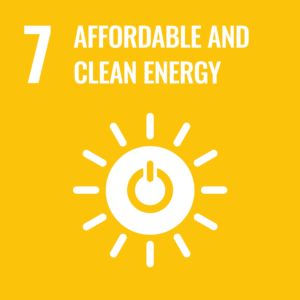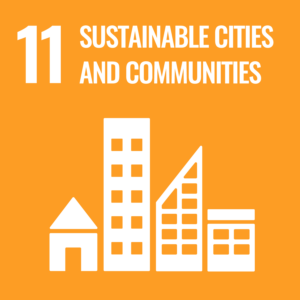 Electrifying Italy’s Future: Navigating Challenges and Opportunities in the Smart Mobility Era
Electrifying Italy’s Future: Navigating Challenges and Opportunities in the Smart Mobility Era
Electric cars: Smart Mobility Report 2023
Electric cars and sustainable mobility are at the heart of the energy transition debate.
The Smart Mobility Report presents an in-depth analysis of global electric car adoption, specifically focusing on Europe.
Moreover, statistics provided by Osservatorio Energy & Strategy reveal a notable increase in electric vehicle adoption worldwide. In fact, there was a rise of 82% in China, 51% in the USA, and 15% in Europe.
Unlike other regions, Italy saw a 15% drop in electric car registrations in 2022. This was due to increased electricity costs, which made electric vehicles less appealing that year. In fact, this was caused by the Russian-Ukrainian conflict.
In this post, we will examine Italy’s embrace of smart mobility and its path toward sustainable transportation. Moreover, we will delve into its progress, challenges, and opportunities in this field.
Electric Cars Trends in Europe
Among European countries, Germany led in new electric car registrations, accounting for 27%, followed by the United Kingdom (23%) and France (22%).
However, when considering market penetration, the countries with the most substantial electric vehicle adoption were Norway (at 89%), Sweden (56%), and Denmark (39%).
In this regard, Italy falls behind the European average, with an uneven distribution of electric car registrations among its regions.
Notably, Italian data from the first eight months of 2023 suggests a resurgence, indicating a significant upswing in the industry.
Charging infrastructure for electric vehicles
In 2022, the expansion of public-access charging infrastructure in Europe continued to affirm the upward trajectory seen in recent years. This growth applies to both “fast charge” and “normal charge” infrastructure.
By the close of 2022, an approximate total of 450,000 charging stations would have been deployed across Europe. Among these, approximately 86% were of the “normal charge” variety, marking a 29% increase compared to 2021. The remaining charging points were classified as “fast charge,” representing a substantial 63% growth compared to the previous year.
Barriers to Electric Car Adoption in Italy
- Limited Charging Infrastructure: One of the key factors influencing the adoption of electric cars is the availability of charging infrastructure. Without a widespread and easily accessible charging infrastructure, potential electric car buyers may be hesitant to make the switch.
- Cost: Electric cars often come with a higher upfront cost compared to traditional gasoline or diesel vehicles. The cost of electric vehicles (EVs) was decreasing over time, but this factor could have still deterred some Italian consumers, particularly if they had budget constraints.
- Range Anxiety: The fear of running out of battery power before reaching a charging station can be a significant concern for potential EV buyers. Italy has a relatively long and narrow shape, which might have led to concerns about the availability of charging infrastructure across the country.
- Cultural Factors: Italians have a strong cultural attachment to cars, and there is a deep-rooted love for traditional, high-performance Italian automobiles. This cultural factor might have made it more challenging for electric cars, which often have a different appeal and driving experience, to gain a foothold.
Future scenarios and actions to be taken
The recent registration rate of electric cars in Italy falls short of meeting the 2030 PNIEC targets (National Integrated Energy and Climate Plan), which were raised in the latest update proposal on June 30, 2023. To meet these increasingly ambitious objectives, there is an urgent need for acceleration.
We anticipate a gradual decline in conventional gasoline-powered cars and a steady, albeit modest, rise in alternative-power vehicles. The expansion of publicly accessible charging infrastructure must closely align with the growing prevalence of electric vehicles.
Additionally, if you wish to stay up-to-date on smart mobility, you can find more material on the Osservatorio Energy & Strategy.
Opportunities for foreign companies
Electric vehicles (EVs) represent a growing market in Italy, and there are opportunities for foreign companies to tap into this market. Here are some key points to consider:
- Government incentives: Italy is actively promoting the adoption of electric vehicles through various incentives and policies (for EV purchases, tax benefits, exemptions from road taxes, and congestion charges). Foreign companies can explore partnerships with local governments or organizations to take advantage of these incentives.
- Charging infrastructure: Developing a robust charging infrastructure is crucial for the widespread adoption of EVs. Foreign companies specializing in EV charging station technology and services can find opportunities to collaborate with Italian companies. Alternatively, they could enter the market directly to help expand the charging network.
- Smart Grid Solutions: Electric vehicles put additional stress on the electric grid. Companies specializing in smart grid solutions, grid management, and energy storage can find opportunities to collaborate with Italian utilities and grid operators.
What Proaxxes can do for companies looking to enter this market in Italy
In Italy, for the realization of public works, the Italian Public Administration requires the use of public procurement procedures to ensure transparency.
Proaxxes begins by providing an initial overview of the Italian market to understand the current operational scenario. The in-depth research then helps identify the potential positioning of the company and outline the strategy for a successful entry.
Furthermore, Proaxxes defines an action plan. A strategic roadmap that outlines the steps necessary to secure a public contract and become registered as a supplier on the websites and e-procurement platforms used by Public Administration tender bodies. This plan serves as a valuable guide for the foreign company’s subsequent decisions and actions.
In addition to this, Proaxxes offers support in marketing activities aimed at raising awareness of the company’s products or services directly among public bodies.
CONCLUSION
Numerous new electric charging stations, primarily for private use, have been established. On the other hand, sales of electric cars have experienced a 15% decrease. Currently, it appears that electric vehicles are perceived as too costly by Italians. Nevertheless, it is expected that both the cost of electric cars and charging will decrease in the future.
What is evident is the requirement for a substantial joint effort from all stakeholders, encompassing both public and private entities.
By fostering cooperation among pioneering businesses, academic institutions, and key players in the automotive sector, we can effectively address the imperative task of reducing carbon emissions in transportation. This is a pivotal and indispensable phase in the shift towards sustainable energy.
Proaxxes can help you navigate this complex landscape and contribute to Italy’s sustainable mobility future. Together, we can drive positive change and reduce carbon emissions in transportation. Contact us!









